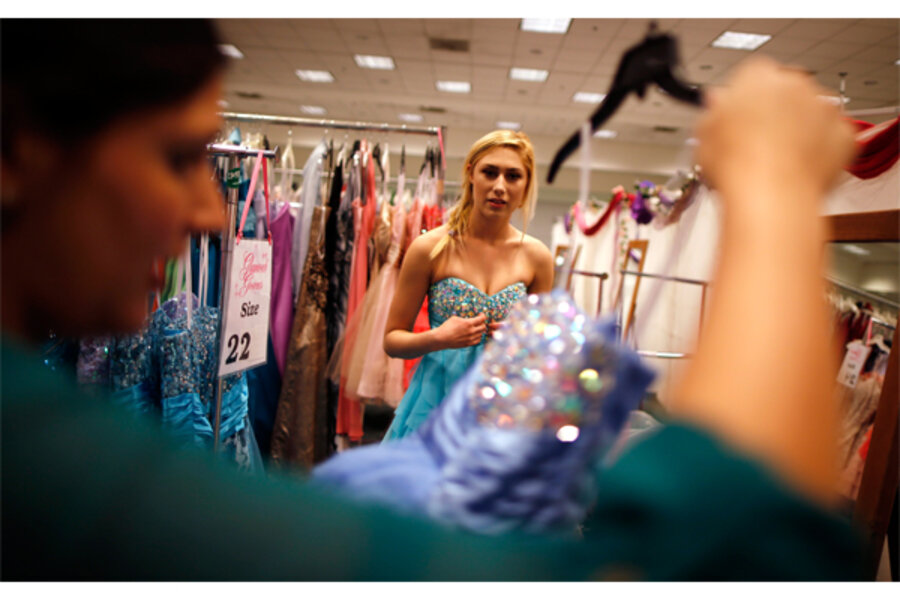Prom bubble? Spending on prom night falls sharply.
Loading...
The prom bubble has burst, according to a new survey.
After several years of rapidly growing prom expenses, this year prom spending is expected to drop 14 percent overall and as much as 27 percent in some regions of the country, according to an annual phone survey of 4,000 families conducted by Visa in January. Is it the lingering economic ghost of the polar vortex, changing fashion trends, or something else that caused the change?
The average American household is expecting to spend $978 on the prom experience this year, down from $1,139 in 2013 after two straight years of sharp increases. Expenditures include dresses and tuxedos, limousine or other transportation rental, tickets, and dinner.
"The prom bubble has finally burst! I think people are realizing that prom is a dance, and you don't have to spend like a celebrity to have a great time," says Nat Sillin Visa's head of US financial education in a release that also hawked the credit card company’s new prom budgeting app.
Teens are also picking up a larger portion of the prom-spending bill, accounting for an average of 44 percent of the prom costs. An October survey from investment banking firm Piper Jaffray & Co found there is a general spending fatigue among teens, especially when it comes to fashion-related items.
That appears to have translated to prom. For example, Brian Beitler, a chief marketing officer for David's Bridal, says his company hasn't seen a dip in the average price of prom dresses, but there has been a change in the way teenaged girls shop for dresses.
“We have seen growth at the two extremes,” he tells the Monitor. “The girls who are spending a lot are going all out, and then there is the consumer that is looking for that prom dress at a really great price level. The $99 dresses are doing extremely well.”
He also notes that prom fashion tends to be dictated by what appears on the red carpet at awards shows like the Golden Globes and the Oscars. This year, simple colors, less extravagant details, and clean lines dominated best-dressed lists. That has popularized less opulent prom apparel (and in many cases, less opulent prices).
Terrible winter weather has proved to have a gloomy effect on spring retail, but Mr. Beitler doesn’t see it as a factor specifically for David's Bridal. However, the weather combined with late spring breaks and Easter holiday (both major shopping periods) mean fewer shopping days, which can push back spending. According to the Visa survey, prom spending is expected to fall the most sharply in regions that had unusually tough winters: the northeast will see spending drop by 27 percent and the south will be down by 23 percent.
Though Visa pointed out that prom spending is disproportionately high and represents a major expense, there is indication that people are spending slightly more within their means. The company says for the first time since it began measuring prom spending habits, parents who make less are spending less on prom. Parents who earn under $50,000 will spend about $200 less than the national average household prom expenditure, while those who earn over $50,000 will spend about $200 more.








